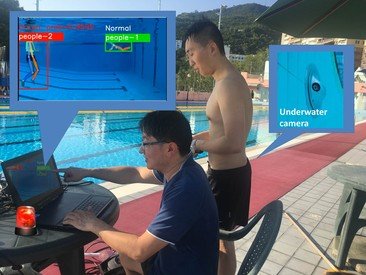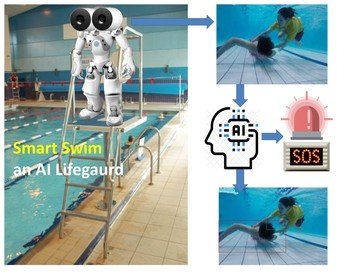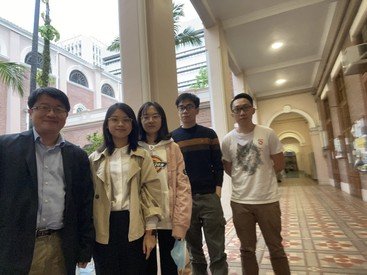Drowning Detection with AI
Swimming pool safety enhancement by Artificial Intelligence
Swimming pools are usually places for fun and healthy exercise, but they can also be deadly. Even with an observant life guard on duty, swimmers can still get into difficulties underwater or in parts of the pool beyond the lifeguard’s field of vision. Underwater cameras can see what is happening, but they can’t call attention to a swimmer in difficulty. By studying body movement patterns and connecting cameras to an artificial intelligence (AI) computer, Dr Wilton Fok of the Department of Electrical and Electronic Engineering has devised an underwater pool safety system that reduces the risk of drowning.
In this project titled “Artificial Intelligence for Drowning Detection and Swimmer Performance Analysis System” funded by the Innovation and Technology Fund for Better Living, 16 cameras are placed around the pool, 12 at different points underwater and four in the ceiling, and are connected to a computer and AI server that uses a human pose estimation algorithm and deep learning. The cameras are used firstly to record the coordinates of knees, arms, shoulders and elbows in every swimming position. The pictures are then labelled and fed into the computer to teach it about body parts and movement, a process called annotation. Once the computer has amassed enough data, it can monitor movements in the pool. When the pre-set threshold of a drowning probability is reached – for example, when the computer assesses that the probability of drowning is higher than an adjustable threshold, say 60 percent – an audio alarm is triggered to attract the lifeguard’s attention.
The system is not designed to replace a lifeguard or other human monitor, but to act as an additional tool. “It helps the lifeguard to detect the underwater situation where they can’t easily observe,” explained Dr Fok.
The primary aim of this innovation is to prevent drowning, but the system also has other possible applications. As well as identifying problems, the computer can monitor swimming posture to identify differences in the techniques of swimmers as well as the progress and variations in individual swimmers over time, which can help swimmers pinpoint errors and improve their performance. The same equipment can also be used for other physical activity monitoring and coaching such as for improving golf and yoga practice. More effective than following an onscreen yoga tutorial, this system can provide a score according to how closely the learner’s pose is aligned with the teacher’s. It can also count how many calories the learner is using.
Using the same body-mapping techniques, the computer can track and analyse a golfer’s swing and then deliver personalised feedback through a robo coach – a virtual on-screen coach.
The system will soon be installed in the pools of two schools and Dr Fok hopes to eventually see the system installed in every swimming pool in Hong Kong.




